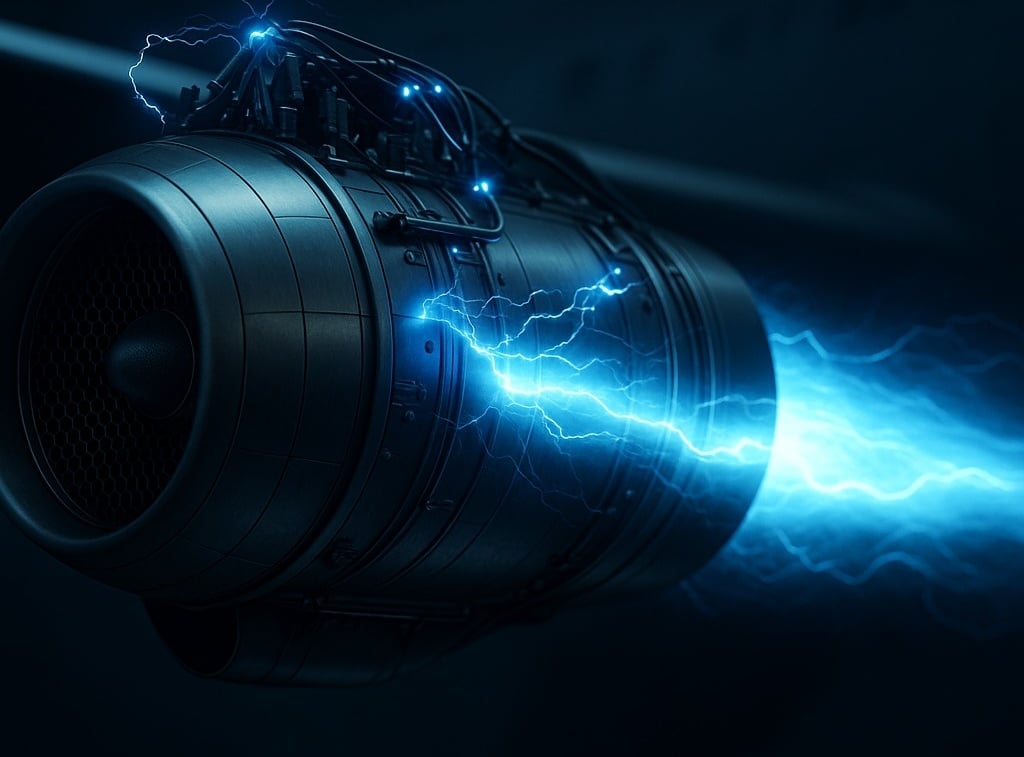China’s Microwave Plasma Engine: Zero Emissions, One Massive Problem
China’s new microwave plasma engine promises true zero-emission thrust but only if someone can solve its brutal megawatt power demands.
FUTURE AND TECH
11/1/20253 min read


China’s microwave air-breathing plasma engine is what happens when a research team collectively decides that the laws of aviation deserve a bit of humiliation. Instead of relying on combustion, rotating machinery, or the world’s most flammable dinosaurs, Professor Jau Tang’s group at Wuhan University built a device that compresses air, bombards it with high-intensity microwaves and turns it into plasma. Not hot air, not heated gas, but fully ionised, electrically violent plasma being shot out of a nozzle as thrust. The prototype even managed to lift a solid steel ball weighing one kilogram, a detail noted when China introduced the experimental engine. It’s not hypothetical. It’s not a simulation. The physics works, and it works in atmosphere, a domain previously dominated by chemical combustion and the slow, polite thrust levels of ion propulsion.
This is not a small leap. Plasma propulsion has existed for decades, but only in the vacuum of space, where you can accelerate ions for months and still barely dent the fuel supply. Doing it inside Earth’s atmosphere, with real thrust, real pressure, and no combustion, is something that was considered unusable for decades because the energy requirements were obscene. And, spoiler: they still are.
Scaling the device up to anything resembling a commercial aircraft introduces a villain so large it might as well get its own movie poster: power. To replace a turbofan on an A320-style airliner, you’d need around 7.8 megawatts of continuous electrical output per engine. Continuous, not peak. That’s the kind of number electrical engineers laugh at before they cry. Even optimists comparing future electric flight systems highlight the unavoidable mass of power electronics needed. If you tried storing the energy in batteries, you’d need hundreds of Tesla-scale packs for a single hour of flight. The aircraft would lift off only in the sense that it would be hoisted by a crane.
And the reason is simple: chemical fuel, as primitive as it is, still boasts a god-tier energy density. Kerosene holds staggering amounts of energy per kilogram, a number electrical systems can’t touch without involving superconductors, black magic, or physics that hasn’t been written yet. Plasma engines flip the model: they’re efficient at the nozzle, but brutally inefficient at the power supply.
Yet what makes the idea stick, and why it continues to resurface in aviation circles, is the purity of the engine itself. Burn nothing. Emit nothing. A propulsion system with no soot, no CO₂, no nitrogen oxides, nothing except an exhaust of hot, ionised air. Analyses hyping future ultra-clean emissions are not exaggerating. The engine itself is, on paper, the cleanest form of atmospheric thrust ever demonstrated. The catch, and there is always a catch, is that a zero-emission engine does not make a zero-emission aircraft if the energy comes from a fossil-powered generator bolted somewhere in the airframe. In that configuration, all you’ve done is make a turbofan angry and overcomplicated.
This is why plasma systems will almost certainly appear first in the military and research sectors. Plasma already plays a role in high-speed propulsion, particularly in scramjet combustion research where temperatures are so high the air itself starts to become electrically interesting. Hypersonic weapon systems, experimental UAVs, high-energy test platforms, these are domains where megawatt-class power systems, cryogenic cooling loops, exotic materials and catastrophic thermal loads are not bugs but features. In that environment, a plasma engine doesn’t look far-fetched. It looks like the natural next step.
But for commercial use, the technology sits at early TRL levels, roughly 3 to 4. That means the core concept works, but almost everything around it doesn’t yet exist. You would need a lightweight generator capable of producing continuous megawatt-scale electrical output, thermal shielding to stop the engine melting itself, modular plasma chambers operating in perfect synchrony, power electronics resistant to electromagnetic interference, and an airframe designed from scratch to accommodate the mass and thermal footprint of the system. The plasma physics is solved. The power system architecture is basically a blank page.
This sparks the industry’s favourite paradox: the plasma engine is ready for the future, but the future is not yet ready for the plasma engine. The tech is decades ahead of the necessary infrastructure. It’s the propulsion equivalent of inventing a sports car that can hit Mach 1 but needs its own dam to start the ignition. And despite all of this, the work matters. Because one day, whether through hydrogen generators, compact nuclear power, high-density fuel cells, superconducting transmission lines, or a technology we haven’t named yet, aircraft will have access to megawatt-scale electrical output without collapsing under the weight of it. And when that day comes, plasma propulsion stops being an experiment and becomes a revolution.
Right now, though, it will continue to live where the constraints make sense: laboratories, defence programmes, hypersonic test ranges, and slide decks filled with timelines that everyone in the room knows are optimistic. Aviation will not abandon kerosene until it has something that beats its brutal arithmetic. Plasma propulsion is that something, but only once someone finally builds the generator the engine has been waiting for.
Until then, the jet engine stays on the wing.
BurstComms.com
Exploring trends that shape our global future.
Sign up for the regular news burst
info@burstcomms.com
Get the next transmission:
© 2025. All rights reserved.
